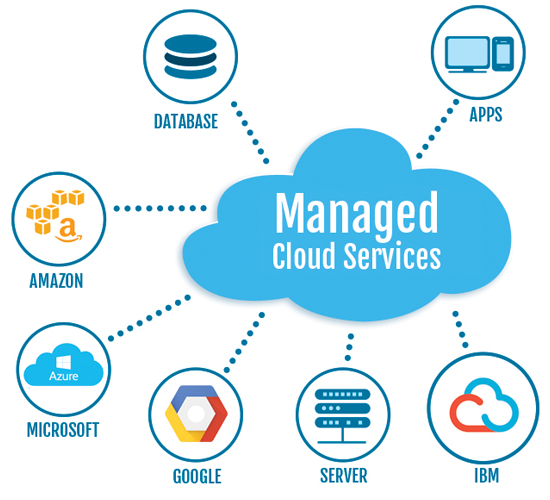Boost Your Service with LinkDaddy Cloud Services: Releasing Universal Cloud Service Prospective
Boost Your Service with LinkDaddy Cloud Services: Releasing Universal Cloud Service Prospective
Blog Article
Simplify Your Infrastructure With Cloud Solutions
As organizations navigate the ever-evolving landscape of modern technology and data administration, the role of cloud services in simplifying framework has ended up being increasingly noticeable. The appeal of streamlined processes, boosted efficiency, and enhanced resource appropriation with cloud solutions is obvious. Nevertheless, the journey in the direction of an extra nimble and cost-effective IT facilities includes even more than just migrating to the cloud. It calls for a strategic strategy and a deep understanding of the subtleties of cloud adoption. So, exactly how can businesses effectively navigate this change and genuinely open the capacity of cloud solutions for streamlining their infrastructure?
Benefits of Cloud Solutions
Cloud solutions offer a structured approach to handling IT facilities, offering organizations with cost-efficiency, flexibility, and scalability. One of the crucial benefits of cloud services is the scalability they offer. Businesses can quickly scale their sources up or down based upon demand, guaranteeing they just spend for what they make use of. This versatility is particularly beneficial for companies with fluctuating requirements or those experiencing growth.
Furthermore, cloud solutions get rid of the need for companies to purchase expensive equipment and software. This cost-efficiency is a substantial advantage, particularly for tiny to medium-sized enterprises seeking to minimize in advance prices. By utilizing cloud solutions, companies can access top quality IT resources without the substantial cost tag related to typical framework arrangements.
Moreover, cloud solutions give businesses with the adaptability to access their data and applications from anywhere with a net connection. This degree of accessibility boosts partnership amongst groups, makes it possible for remote work, and raises general performance. The flexibility offered by cloud solutions empowers companies to adapt promptly to altering market problems and client demands.
Price Financial Savings and Scalability
In addition to the functional advantages highlighted earlier, the integration of cloud services right into a firm's framework generates considerable expense savings and enhanced scalability. Cloud services offer a pay-as-you-go version, enabling businesses to scale resources up or down based upon present requirements, thus preventing the prices connected with keeping excess capability. This adaptability makes it possible for companies to adjust promptly to fluctuating demands without incurring unnecessary expenses.
Additionally, cloud services eliminate the requirement for upfront investments in equipment and software application, decreasing capital investment. Operating costs are also reduced as business no longer require to manage and keep physical servers, resulting in reduced energy usage and IT staffing costs. Additionally, cloud services provide automated updates and upkeep, guaranteeing that the infrastructure stays safe and current without requiring hands-on treatments.
Enhanced Protection Procedures
Applying stringent security procedures is critical when integrating cloud solutions right into a business's framework to secure delicate information and ensure compliance with market laws. Cloud service companies offer improved safety functions such as information file encryption, firewall protection, and multi-factor authentication to mitigate cybersecurity risks.
In click for more info addition, normal safety and security audits and conformity analyses help determine susceptabilities and ensure adherence to sector requirements. Firms can additionally take advantage of attributes like automatic protection updates and real-time danger tracking supplied by cloud service suppliers. By focusing on safety actions and staying proactive in resolving prospective threats, services can with confidence take advantage of cloud solutions while securing their useful data from unauthorized gain access to or violations.
Transitioning to Cloud Facilities
To successfully incorporate cloud services right into a company's framework, an organized technique Visit This Link that resolves the shift towards cloud-based services is necessary. Transitioning to cloud facilities entails mindful planning and implementation to guarantee a smooth migration procedure - universal cloud Service.
Once the assessment is complete, a movement technique must be developed. This method should detail the timeline, sources, and obligations for moving each part to the cloud. It is important to connect this plan plainly to all stakeholders to guarantee placement and minimize disruptions during the shift.
Throughout the movement monitoring, screening and procedure are vital to determine and deal with any type of problems immediately. Routine checkpoints need to be established to track progress and make essential modifications. Furthermore, training for employees on making use of cloud services need to be provided to guarantee a successful change and maximize the benefits of the new infrastructure.
Best Practices for Cloud Adoption
Effective fostering of cloud solutions rests on the strategic alignment of organization goals with technical capabilities and business preparedness. To guarantee a smooth transition to the cloud, companies ought to begin by conducting an extensive assessment of their current infrastructure and recognizing which workloads are best matched for cloud migration. It is important to involve key stakeholders from various departments in the decision-making process to acquire buy-in and resolve any worries beforehand.
Another best technique for cloud fostering is to focus More Help on safety and security and compliance. Organizations must meticulously review the protection actions supplied by cloud provider and guarantee that their information is protected according to industry standards and regulative requirements. Implementing durable information security, access controls, and normal security audits can help reduce threats related to cloud adoption.

Final Thought
As organizations navigate the ever-evolving landscape of innovation and data management, the role of cloud services in streamlining facilities has actually become increasingly famous - linkdaddy cloud services press release. How can companies properly navigate this transition and truly unlock the possibility of cloud services for simplifying their infrastructure?
Cloud solutions use a streamlined method to handling IT facilities, supplying companies with versatility, scalability, and cost-efficiency. By making use of cloud solutions, services can access premium IT resources without the significant rate tag associated with traditional infrastructure configurations.
To make sure a smooth shift to the cloud, companies must begin by performing a comprehensive analysis of their existing facilities and recognizing which workloads are best matched for cloud migration.
Report this page